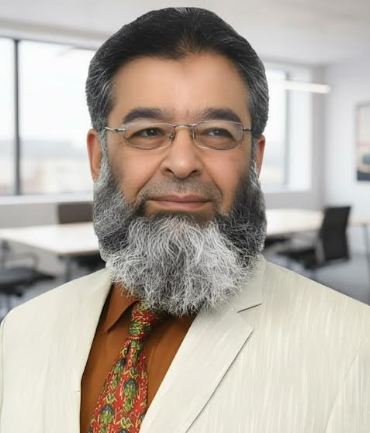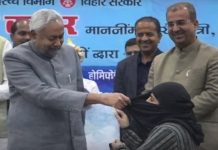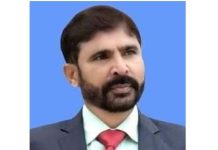
by Muhammad Mohsin Iqbal
There are some truths in history that rest quietly in the pages of books and official documents. They remain hidden from the public eye, awaiting discovery by those who devote themselves to research. Many episodes of Pakistan’s political evolution fall into this category, where the general perception of events does not always align with their factual depth. Among such historical realities lies the multifaceted career of one of Pakistan’s most powerful and some extent controversial figures — Field Marshal Muhammad Ayub Khan. Most Pakistanis know him as the first military ruler of Pakistan, the man who imposed the country’s first Martial Law and later became its President. Yet few realize that, for a time, Ayub Khan also held the office of Prime Minister — making him one of the rare individuals in the nation’s history to simultaneously embody military, executive, and political authority.
Muhammad Ayub Khan was born on May 14, 1907, in the village of Rehana, District Haripur in the North-West Frontier Province (now Khyber Pakhtunkhwa). After early education, he joined the Royal Military Academy at Sandhurst in 1926 and was commissioned into the British Indian Army in 2 February 1928. His steady rise through the ranks reflected his discipline and administrative ability. When Pakistan came into being in 1947, Ayub Khan was among the senior-most Muslim officers in the Indian Army and was chosen by Prime Minister Liaquat Ali Khan to serve in Pakistan’s newly established military.
In January 17, 1951, Ayub Khan was appointed as the Commander-in-Chief of the Pakistan Army, succeeding General Sir Douglas Gracey, the last British officer to hold that position. This appointment made Ayub Khan the first Pakistani to command the national army. His tenure as Commander-in-Chief lasted until 27October 1958 — a period during which he gradually became a dominant figure in Pakistan’s civil-military structure.
The turning point came on October 7, 1958, when President Iskander Mirza abrogated the 1956 Constitution, dissolved the national and provincial assemblies, and declared Martial Law across the country. He appointed General Ayub Khan as the Chief Martial Law Administrator (CMLA), giving him sweeping powers to run the country.
According to the Gazette of Pakistan on 27 October 1958,
“President Iskander Mirza has been pleased this twentyseventh day of October 1958, to appoint General Mohammad Ayub Khan, Supreme Commander of the Armed Forces of Pakistan and Chief Martial Law Administrator, to be the Prime Minister, it is hereby notified that the said General Mohammad Ayub Khan has taken upon himself the execution of the office of the Prime Minister in the forenoon of this twentyseventh day of October 1958”.
Along with that, the President also appointed Lt. General Mohammad Azam Khan, Lt. General W.A. Burki, Mr. Mohammad Ibrahim, Lt. General K.M. Sheikh, Mr. Abdul Qasim Khan, Khan F. M Khan, Mr. Zulfikar Ali Bhutto and Mr. Muhammad Hafizur Rahman to be Ministers of the Government of Pakistan.
According to the archives and newspapers of 28 October 1958, the following President’s Proclamation was issued by the President of Pakistan, General Mohammad Ayun Khan:
“Whereas by his declaration made at 10 o’clock this night of the 27th of October 1958. Major General Iskander Mirza, lately President of Pakistan, has relinquished his office of President and has handed over all power to me, General Mohammad Ayub Khan, Chief Martial Law Administrator and Supreme Commander of Armed Forces of Pakistan. Now, therefore, I have this same night of the 27th day of October 1958, forthwith assumed the said office of President and have taken upon myself the exercise of the said power and all other powers enabling me in this behalf.”
As President of Pakistan (1958–1969), Ayub Khan introduced sweeping administrative and economic reforms. His rule was marked by efforts to industrialize Pakistan, promote infrastructure, and attract foreign investment. His “Decade of Development” from 1958 to 1968 saw significant growth in agriculture, manufacturing, and education. The construction of Mangla and Tarbela Dams, the establishment of new universities, and the promotion of the “Green Revolution” marked this period as one of visible progress. However, his policies also widened the economic gap between regions, giving rise to discontent, particularly in East Pakistan (now Bangladesh).
During this transitional phase, Ayub Khan concentrated all executive authority in his own hands — simultaneously holding the offices of President, Chief Martial Law Administrator, Commander-in-Chief of the Army, and Prime Minister of Pakistan.
In 1962, Ayub Khan introduced a new Constitution of Pakistan, replacing the abrogated 1956 version. The new system replaced parliamentary democracy with a presidential form of government, concentrating power in the office of the President — a position he himself occupied. Hence, from 1962 to 1969, Ayub Khan ruled as both the constitutional and executive authority of Pakistan.
However, power and popularity seldom walk together for long. The growing political awareness in both wings of the country, the widening regional disparities, and opposition movements led by political figures like Mohtarma Fatima Jinnah and later Zulfikar Ali Bhutto gradually eroded his authority. By early 1969, mass protests and civil unrest had swept the nation, forcing Ayub Khan to resign on March 25, 1969, handing power to General Yahya Khan.
Ayub Khan retired from politics and lived quietly until his death on April 19, 1974. He was buried in his native village of Rehana, where his grave remains a symbol of a man who rose from humble beginnings to the highest offices of the state — and whose name continues to provoke debate among historians and political thinkers. Some remember him as the builder of modern Pakistan, a visionary who brought discipline and development. Others recall him as the founder of the military’s dominance in national politics and the initiator of a pattern that would recur in Pakistan’s history.
Yet, the lesser-known fact of his simultaneous control as President, Prime Minister, and Army Chief reveals the full extent of his authority. It was an era when one man governed Pakistan in its entirety — politically, militarily, and administratively. The study of Ayub Khan’s rule is not merely a reflection on one man’s ambition; it is a mirror to the nation’s recurring struggle between democracy and discipline, between elected representation and guided leadership.
In revisiting these chapters of history, one realizes that facts often lie beyond the horizon of popular memory. They wait to be rediscovered, not merely to glorify or vilify individuals, but to understand how nations are shaped by the personalities who lead them — for better or for worse.

















